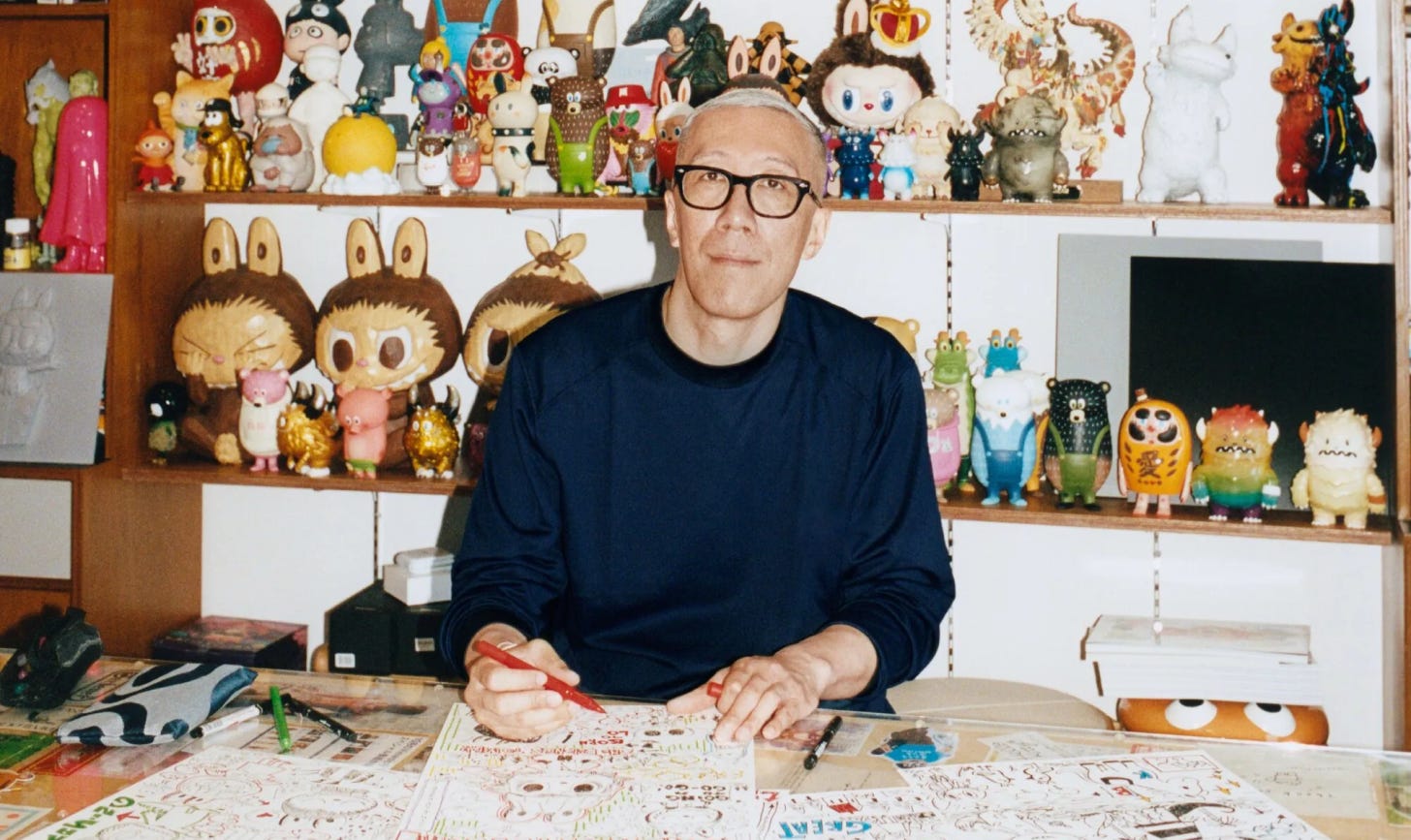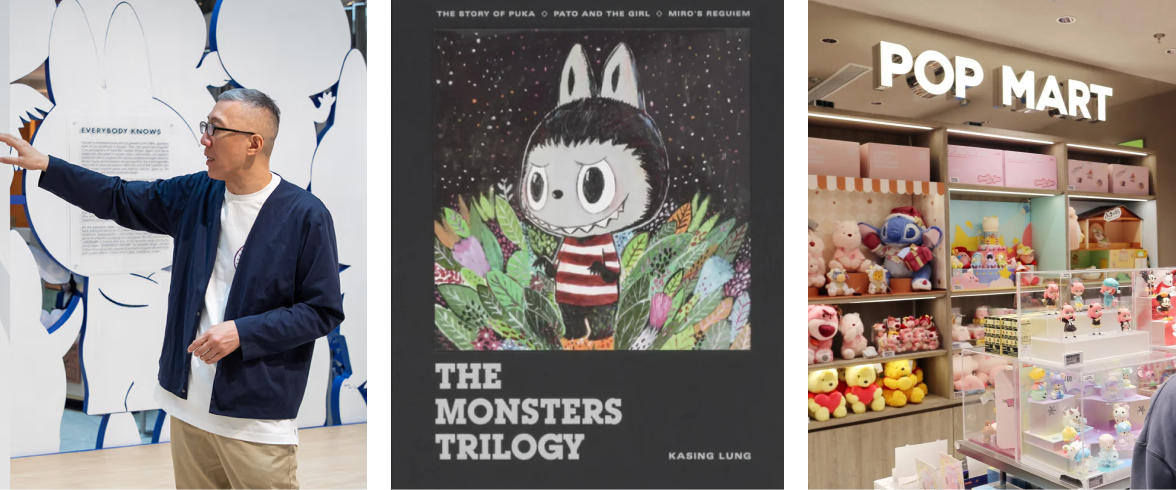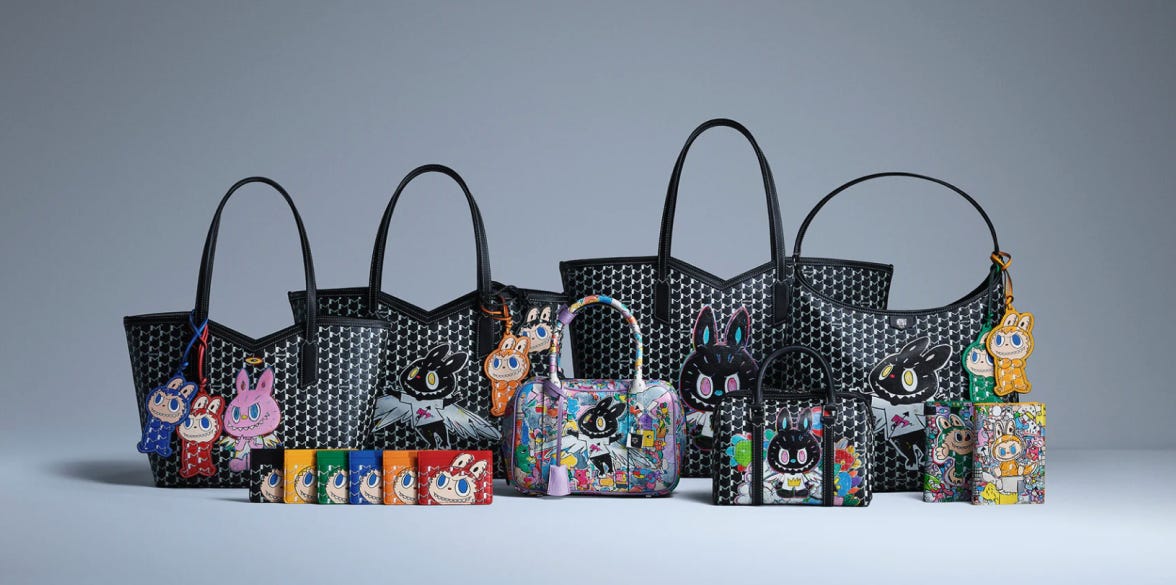Labubu deserves to be more than a fad
Kasing Lung’s reclaiming of Labubu, highlights from NYFW, and the Sweetgreen collab that has everybody drooling
September 12, 2025 | Edinburgh, UK
The Brandsider is a newsletter about the making of cult brands. You’re reading The Briefing, a roundup of this week’s stories - and what they teach us about building cult-worthy brands.
Hi - and welcome back to The Brandsider.
It’s officially fresher’s week at the University of Edinburgh, and I get to hear 19-year-olds drunk-yelling at each other into the wee hours of the morning. I’d be upset, except I remember how much fun I had as a freshman at McGill. On another, much more glamorous note, it was also Fashion Week in New York. I’ve dedicated a section of the Watchlist to a few notable cult moves.
Over on socials, I shared a deep dive carrousel on Aesop (700K views!), hit 30K Instagram followers (yay!) and produced my first ‘lesson’ video on the making of cult brands. The latter is well overdue, and I know I’ll enjoy building out this new series.
A few thoughts I had while making it: Phoebe Philo is so cool. There’s no way Starbucks’ current turnaround will work (Brian Niccol is about efficiency, not soul). And that I’m confused as to why this is a controversial topic. Greatness demands obsession. Obsession is rare. Therefore greatness is rare. That makes sense to me.
Now, onto the good stuff. This newsletter typically analyzes 3 brand moves of the week and what they teach us about building cult brands. But every so often, one story demands a closer look. This week: Labubu. Specifically, what their new collab with Moynat reveals about the brand’s fragmented market presence, and why (I believe) Labubu deserves to be more than a fad. Moynat graciously provided The Brandsider with a quote for this article, which is pretty cool.
Stay tuned for the Watchlist at the end. And hope you enjoy this one.
Tamara
Read → Inside the $2.5b cult of intention (The Brandsider)
Watch → Lesson 1: Begin with obsession (The Brandsider)
In today’s newsletter → Moynat’s collab with Kasing Lung, highlights from NYFW, succession plans at Kering, Nike’s anti-cringe campaign, Blank Street’s rebrand, and some thoughts on celebrity books clubs.
The reclaiming of Labubu
Note: Labubu is used as shorthand for the cast of characters in Kasing Lung’s illustrated book series The Monsters. Labubu is not a legal entity per se - it’s a character created by the artist and licensed to Pop Mart for distribution.
A curious partnership
On the surface, Labubu and Moynat could not be more different.
Labubu: a TikTok-fueled craze, endlessly compared to the notorious Beanie Babies or Cabbage Patch Kids of 80’s/90’s. And Moynat: a 175-year-old Parisian leather house, celebrated for its understated luxury, savoir-faire, and trunk-making history.
At first glance, their collaboration reads like another high fashion x pop culture stunt. The difference? Moynat partnered directly with Kasing Lung - not Pop Mart.
This surfaces the real tension at the heart of Labubu: a brand split between viral fandom and its founder’s original vision. Without careful brand management, Kasing Lung risks seeing his legacy reduced to a passing fad.
In this piece I pose the question: can Kasing Lung reclaim the myth of Labubu - and turn it into something enduring?
From cult seed to chaos
Labubu actually began with the ingredients of a cult ‘brand’.
A singular founder’s vision: Kasing Lung’s dark folkloric universe.
Obsessive craft: every line hand-drawn, every sketch a work of art.
World-building as the default: Labubu wasn’t a toy or commercial venture - but simply one of the characters from his books.
Then came Chinese toy distributor Pop Mart. The company licensed Labubu, scaled it with plush toys and blind boxes, and let TikTok fan culture take over. Pop Mart turned Lung’s storybook characters into a multi-billion business.
But without a gatekeeper, the mythology splintered. Conspiracy theories, Lafufus, Labubu ‘families’ dressed in Prada - a tidal wave of user-generated world-building. Powerful, but increasingly disconnected from Lung’s intent.
Watch → Labubu’s user-generated world-building (The Brandsider)
The two-track problem
This left Labubu’s brand running on two parallel tracks:
On one: viral fandom with no discipline or red-thread.
On the other: Lung’s steady commitment to art and storytelling.
Lung has been mostly quiet on the matter - letting the craze run its course. The Belgium-based artist focuses primarily on his art - hosting solo exhibitions in Tokyo and Hong Kong, and working on his next book in The Monsters series.
But through this new collaboration, Lung begins to reclaim Labubu’s meaning.
A question of legacy
The collection reminds us that, behind the TikTok frenzy, sits a mythology crafted with the same obsessive care as Moynat’s luxury goods.
“The reason I accepted [to do the Moynat collaboration] is because they are making such high-quality products, made by hand like my paintings. I think it’s very matching” - Lung, for WWD
For Kasing, reclaiming Labubu isn’t just a nice-to-have. It’s a question of legacy.
Left unchecked, Labubu risks the fate of every craze. But rooted in his artistry and intentionality, it has the potential to be of enduring cultural reference (akin to Ghibli or Sanrio).
What’s missing is a gatekeeper: someone to codify the brand, safeguard the story, and transform noise into mythology. If not Kasing (artist) or Pop Mart (distributor), then perhaps a third party brand steward.
A house of artistry
For the luxury French Maison, partnering with a TikTok craze may look like a stretch.
On closer inspection, there’s clear alignment in Lung’s commitment to craft, and Moynat’s long tradition of collaborating with artists.
I had the chance to connect with a representative of the brand, who shared:
“For Moynat, it makes complete sense: collaborations with artists are in our DNA. From the early 19th century, Moynat worked with figures like Henri Rapin, who created the Moynat ‘M’ Canvas and infused the house with Art Nouveau and Art Deco influences. Partnering with Kasing continues that living tradition of dialogue with art” - Moynat, for The Brandsider
For Moynat, the collaboration is a savvy, strategic way to generate buzz (as they did with their 520 campaign in May).
But for Lung, it’s something greater: the chance to set the record straight, to tell the real Labubu story before it’s forever labeled a fad.
Cult homework: Who’s protecting your brand’s story? And if it isn’t you, what story is the world writing in your place?
Watchlist
Cult moves that caught my eye, even if we’re not unpacking them (yet).
New York Fashion Week (so far)
Valentino brought back Studio 54 for a night of debauchery. Cher was present and accounted for.
Starbucks continues its quest for cultural relevance. The coffee brand partnered with Zac Posen for the creation of this striking siren dress. It’s a fun way to get on the map, but ngl it feels a bit forced. Just like their Oprah Book Club partnership.
Jacquemus & Veuve Clicquot hosted a gorgeous event at the Central Park Boathouse to celebrate the launch of their partnership. Dreamy.
Jack Carlsson (prev. Rowing Blazers) debuted his first collection as president and creative director of J. Press. It’s giving early Chuck Bass in the best way.
I now understand why Anna Wintour always wears sunglasses. In this video captured by fashion creator Kate Bartlett, Chloe Malle’s expressions are on full display during Michael Kors’ S/S26 fashion show. When everyone’s watching your every move, a poker face needs to be part of the uniform.
Legacy
After 20 years, François-Henri Pinault is stepping down as CEO of Kering (Saint Laurent, Bottega Veneta, Balenciaga, Gucci etc.).
When he joined, PPR was a broad conglomerate - including department stores, furniture, electronics. During his tenure, François-Henri whittled the group down to a few luxury players, rebranded to Kering, and took a chance on up-and-coming creative talent (Demna, Hedi Slimane, Alessandro Michele) to give the group an edge.
He was a pioneer, and now he’s passing the torch to Luca de Meo (coming from Renault, a French auto company). Luca will have his own vision for the next 20 years of Kering, I’m sure. Exciting.
The future of Giorgio Armani will look a lot different. Until his passing last week, Giorgio Armani was the independent owner-operator of his namesake. In an industry mainly made up of Kering, LVMH and Prada Group - keeping his independence was a no small feat.
But now, new information from his will paints a different future for the brand: he has instructed his nominees to gradually sell the Armani empire, or seek an IPO.
Rebrands + revivals
Everlane was once a millennial favourite, gaining recognition for its ‘radical transparency’ and DTC business model. But that was 2015. Ten years later, the brand wants to regain its footing under new-ish CEO Alfred Chang.
Everlane will keep selling basics, but has officially shifted their positioning to ‘clean luxury’ and wants to appeal to Gen Z.
Naming Laufey (’From The Start’) as the brand’s first celebrity ambassador is part of that plan.
Blank Street has officially outgrown coffee. Done by Wolff Olins, their rebrand drops ‘coffee’ from the name and doubles down on their matcha-green identity - fitting, since matcha now drives more than 50% of sales.
Matcha’s great and all, but I’m still convinced the real endgame here is real estate and brand discovery (h/t Michelle Wiles).
Launches
Nike asks ‘Why do it’? In a new campaign narrated by Tyler the Creator, the brand flips its iconic slogan on its head - aiming to inspire a new generation by tackling cringe culture head-on.
A lesson in evolving to stay culturally relevant while protecting a brand’s sacred core. This seems to have caused some drama, but I liked it.
Balenciaga is launching its first modern collection of 10 fine fragrances - nearly 80 years after Cristóbal Balenciaga debuted his first scent, Le Dix.
During R&D, archivists uncovered a 1947 bottle and faithfully recreated it, down to the packaging and formula. We love a thoughtful nod to history - especially as the house gears up for a new era with Pierpaolo Piccioli.
Collaborations
Jonathan Anderson continues his mise en place for world domination at Dior. And of course, Loewe will be feeling the effects of it. Greta Lee, the actress in Past Lives (😭) and The Morning Show has been plucked from Loewe and named Dior’s latest brand ambassador. This is going to be good.
People can’t get enough of Sweetgreen’s partnership with Nicolas Vansteenberghe from Love Island US. I could wax poetic about showcasing the local farmers they celebrate in their press release, but Sweetgreen has always had a bit of a cheekiness behind their wholesome farm-to-table messaging. Regardless, we thank them for their service.
Signals + noise
I very much enjoyed this video about how Dua Lipa (sorry, I mean dula peep) is the best literary interviewer out there. Every celebrity has a book club these days, but they’re mostly shills unless rooted in a genuine love for literature. Service 95 does not have that problem. In other words, Dua Lipa began with obsession.
Lululemon is having a really bad time. This isn’t news, but I was just reflecting on how, at some point, the brand was all anyone wore. What happened to Lululemon? Perhaps the topic of a future deep dive.
Thanks for reading! Full transparency: over the next few weeks, this newsletter will be evolving into a partially-paywalled product. But I’ll share more in time and place.
xo,
The Brandsider









Such an interesting take on the KL / Moynat collab. At first I thought this was going to be another Burberry streetwear saga but agree with you that this feels different. Love the longer story on occasion as well!